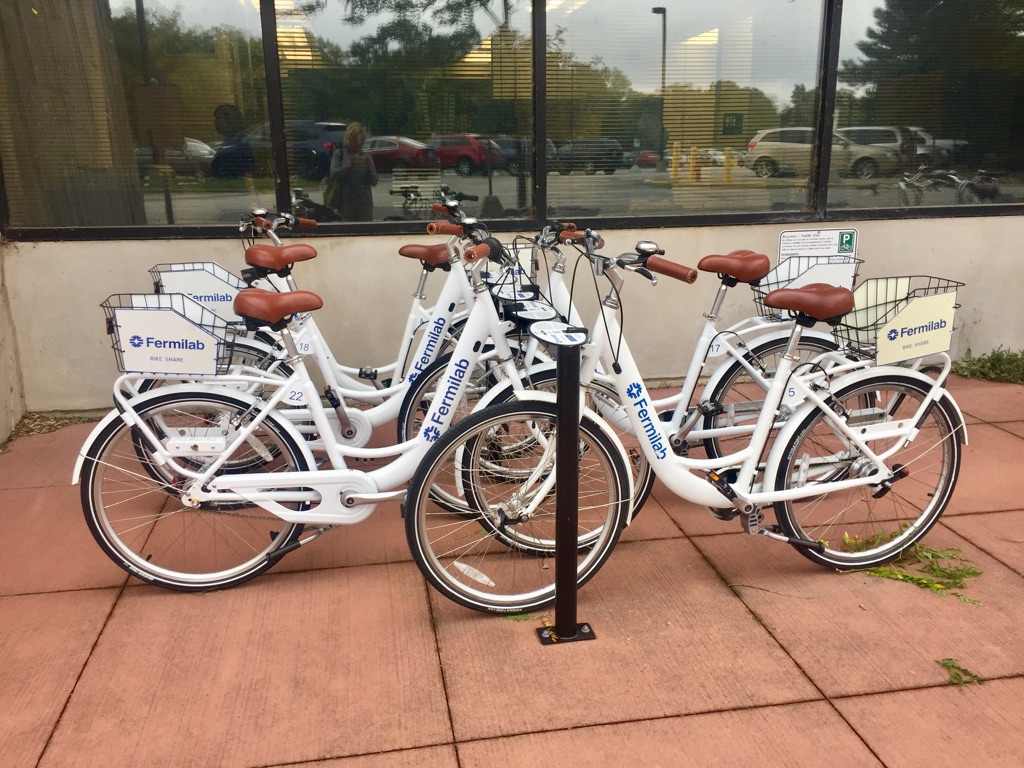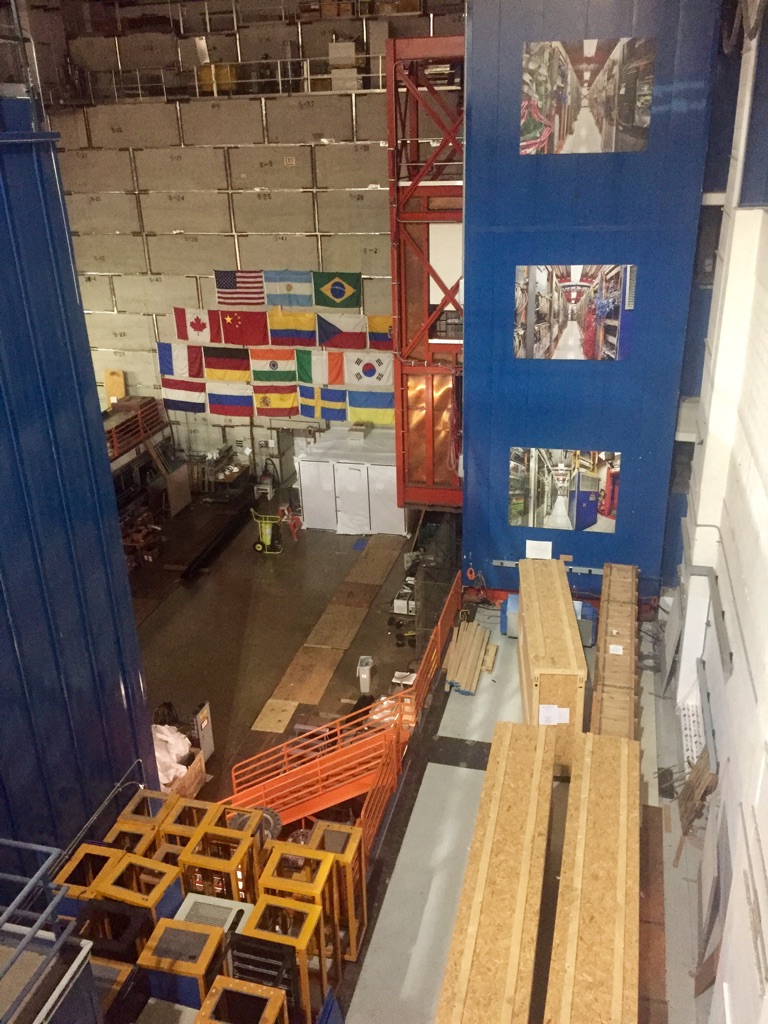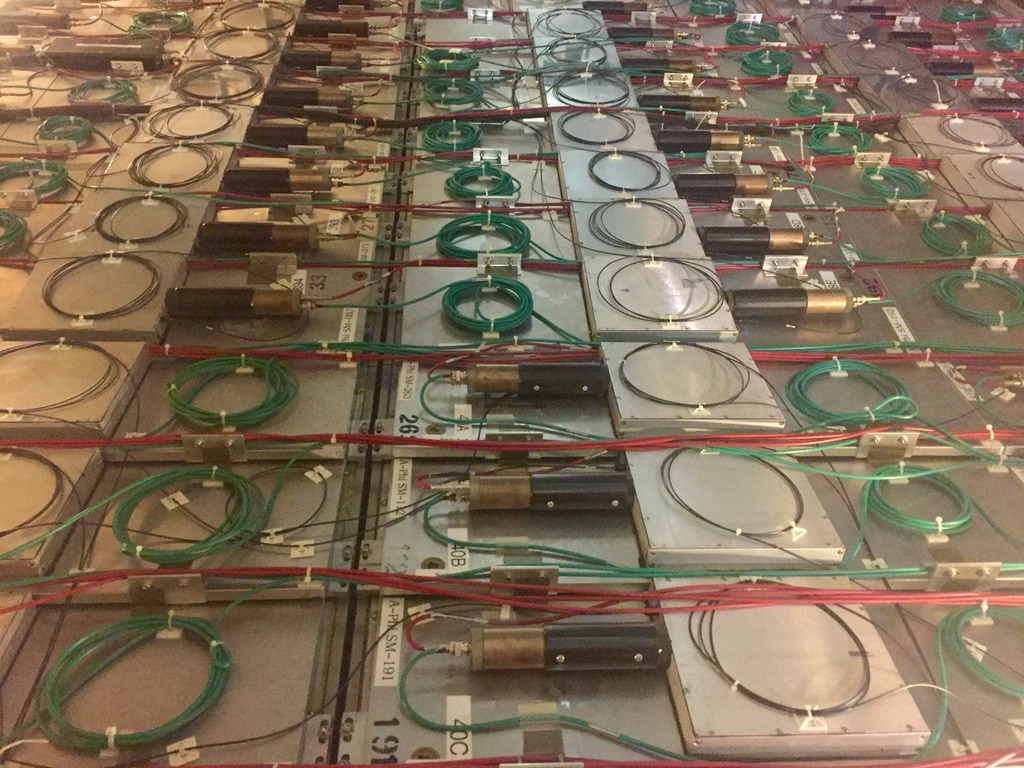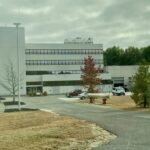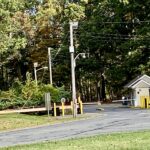We forgo the bicycles that are reserved for staff at the Fermi National Accelerator Laboratory (Fermilab) and take a shuttle bus from the main building to a warehouse-like structure painted baby blue. This is where monthly tours of the DZero particle detector and Tevatron begin, only the Tevatron, a four-mile circular underground tunnel is excluded this day due to “minor issues” after a recent inspection. A dozen people who had registered in advance show up for the two-hour public tour. We are divided into groups with mine consisting of a young Indian couple traveling cross country from Boston to L.A., and a Chicago woman and her father who is visiting from Florida.
What we are about to see is a non-operating ode to American scientific discovery. The Tevatron was once the largest energy particle collider in the world. It opened a new frontier in particle physics, bringing scientists and researchers from across the world to Fermilab’s 6,800-acre campus in Batavia, Illinois, a southwest suburb of Chicago. In 1995 CDF and DZero were two experiments connected to the Tevatron that confirmed the existence of the then holy grail of particle physics – the top quark, one of the fundamental particles of matter. Nearly 30 years later in July 2019 this discovery and the detailed measurements made here was awarded The European Physical Society Prize.
Visitors need not have a scientific background to enjoy this tour at Fermilab. All that is required is curiosity, advanced registration and a government approved ID such as a driver’s license.
Our tour guide and affable ambassador for the lab is experimental particle physicist Adam Lyon. His warm welcome and persistent smile defies any perception of the scientist as an introvert loner in a lab coat. “It’s okay to take photos and ask any questions,” Lyon says as we enter the building.
We all look down. Lyon refers to the below grade area as the assembly pit. He tells us how vast amounts of equipment were shipped and pieced together here. Some parts were built in the lab’s machine shop. Each element of the detector’s subsystems was finely tuned and tested before installation. Our eyes move to the flags pinned on a concrete wall. We learn that 18 countries and nearly 500 physicists from 90 institutions came to work on the DZero experiment. Lyon was one of those physicists.
After descending some stairs, we enter the control room where a semicircle of darkened computers screens and empty chairs sit still. Steps away is an exhibit area with a model of the DZero detector. I am surprised by some of the facts Lyon shares. Subatomic particles cannot be seen even with precision instruments. They are detected by what they do. At the point where particles collide there is no sound because the beam lines contain no air. “The only sound one could hear during the DZero experiment was the fans used to cool the electronics,” he says.
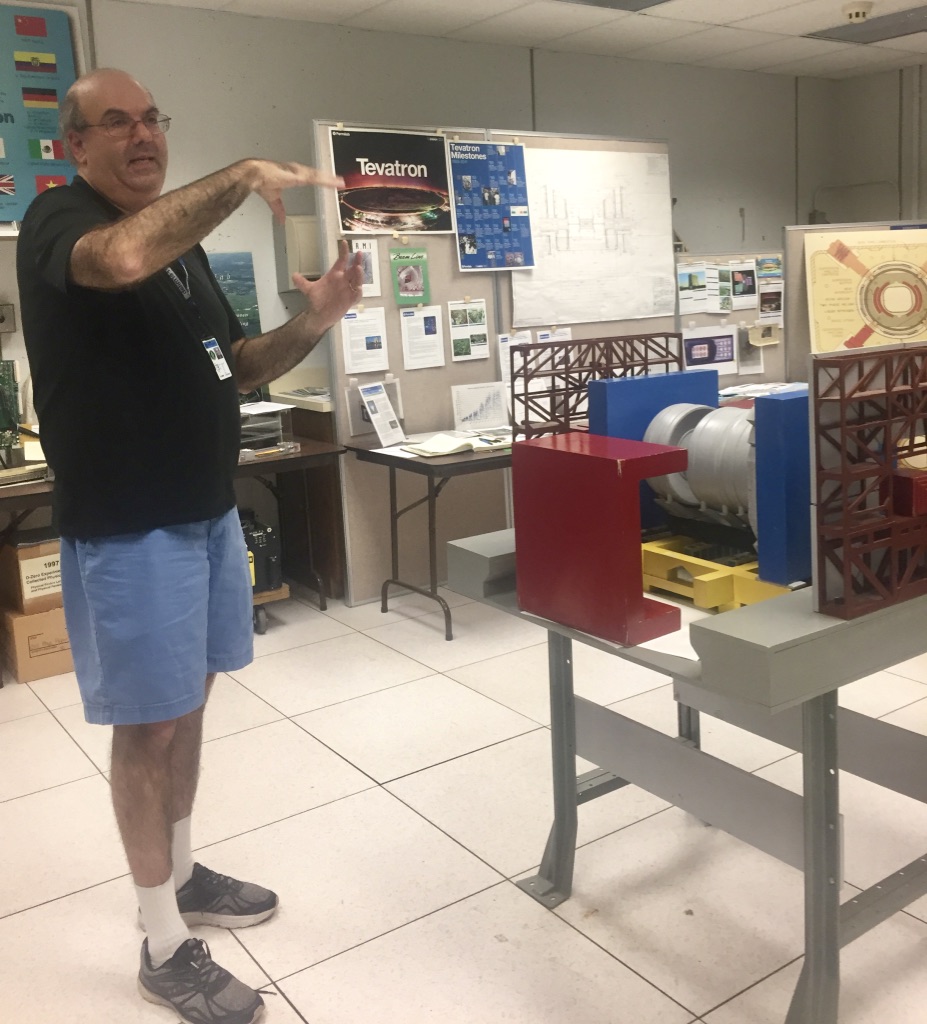 Physicist Adam Lyon describes the invisible world of particle physics during the DZero public tour at Fermilab.
Physicist Adam Lyon describes the invisible world of particle physics during the DZero public tour at Fermilab.
On the wall, a cartoon drawing of a crazed dog and a plaque reading The Ninth Circle provoke questions from the group. Lyon laughs as he explains that the dog drawing was created by a New Yorker magazine cartoonist who lived next door to physicist and DZero spokesperson Paul Grannis. Years later, Grannis explained that the ‘dog’ was a joke he had mentioned to his neighbor about using pretentious names for science experiments. DZero was named for its station location on the Tevatron ring. They named their meeting rooms too. “The Ninth Circle is a reference to Dante’s Inferno. That’s the room where many important and sometimes contentious meetings were held.”
We put on hard hats before entering the Collision Hall, which is located behind the concrete wall we saw upon entering the building. Lyon slings a radiation detector the size of a cigar around his neck. As we enter the narrow dark aisles, the massiveness of the detector and the symmetry of its components allow me to understand why one scientist described this achievement as exquisite.
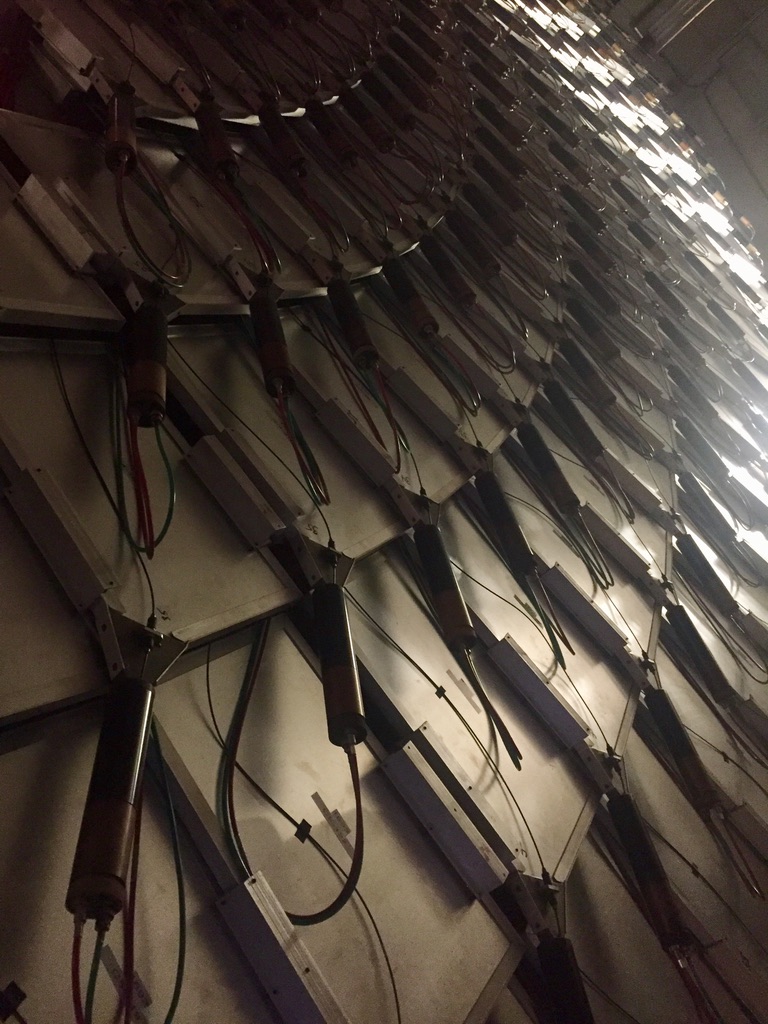 The technological might that it took to create such a machine is on full display. The detector weighs thousands of tons and contains millions of channels. It consists of three layers used to record the splatter of energy, momentum and electric charges. The detector is attached to the Tevatron and acts as a super microscope recording what happens at the point where protons and anti-protons moving at nearly the speed of light in opposite directions collide, creating energy that converts into new matter. Some of this information is beyond my ability to perceive. Tens of millions of interactions are recorded per second. “It’s always exciting to find something new. We ignore the boring stuff,” says Lyon. He is an example of how science reveals its beauty to the eye that knows how to look for it.
The technological might that it took to create such a machine is on full display. The detector weighs thousands of tons and contains millions of channels. It consists of three layers used to record the splatter of energy, momentum and electric charges. The detector is attached to the Tevatron and acts as a super microscope recording what happens at the point where protons and anti-protons moving at nearly the speed of light in opposite directions collide, creating energy that converts into new matter. Some of this information is beyond my ability to perceive. Tens of millions of interactions are recorded per second. “It’s always exciting to find something new. We ignore the boring stuff,” says Lyon. He is an example of how science reveals its beauty to the eye that knows how to look for it.
We climb a ladder into what Lyon refers to as “the cathedral.” The heart of the detector. It feels like being in a submarine. When I see the beam line, I am a bit disappointed. I’m expecting something more Star Wars like, but instead it is a modest sized metal pipe, something that might be found in a basement. But this pipe is where the particle beams reside. Lyon says he believes this is the only place where members of the public can walk through a high energy particle detector. When he says that, the privilege of being here bounces back in me. I have traveled across the world and observed many unusual cultural icons. This colossal detector is a tribute to American know-how.
The search continues
The breakthrough discovery of the top quark offered the world the last predicted quark in the Standard Model, a theory that describes how particle physics works. It was physicist Murray Gell-Man who first introduced the word “quark” into physics lexicon in 1963. However, the word was first coined by Irish writer James Joyce in Finnegan’s Wake published in 1939: “Three quarks for Muster Mark!” Such diversion in thought is necessary for me to unwind my now stretched brain.
The top quark was the steppingstone that led scientists at CERN in Switzerland to find the Higgs Bosson. A magnificent find. It was the last particle predicted to complete the Standard Model. However, Lyon and other scientists think there is more than what the Standard Model explains. During the DZero experiment he observed muons, particles like electrons but heavier. “They are rare in nature and exists for only one millionth of a second before turning into electrons or nuetrinos.” Why are they there? What role do they play in the universe? He is urged on by questions. His search is being satisfied through the current Muon g-2 experiment at Fermilab which continues what was started by DZero and other experiments. I asked what thread there is between the experiments that have already taken up decades of his work life. “The Muon g-2 is very precise and specific on how muons work, whereas DZero had a broader focus to confirm the Standard Model by finding the top quark.”
Outside the building after the tour, my eyes roam across the acres of forested and prairie land on the Fermilab campus. I spot sculptures and ponds of water but miss seeing the heard of bison who live here. On the shuttle bus back to the main building Lyon paraphrases a quote he attributes to Robert Wilson, founding director of the lab. He then falls silent as if there is nothing more to say.
Ideas are not evidence
In a follow up conversation after the tour Lyon helped me understand how much more there is to know than the current measly five percent of energy in the universe found in ordinary matter. Why do particles have the masses they do? Why are electrons so light and top quarks so heavy? “There are lots of ideas with new theories that may extend the Standard Model, but no one has found experimental evidence.” Evidence. That’s his job. No new particles have been found since the Higgs Boson in 2012. “I’m hoping we will find discrepancies. The hints are there. We may find something that will become part of a bigger theory and explains more.”
Where should they look? “We don’t know what dark matter is, only what it’s not. We see evidence of an expanding universe accelerating and know dark energy plays a role. We see that matter rotation of galaxies isn’t what we expect.” I’m not sure why, but Lyon makes me glad that someone is thinking about this. I remember a quote from Emerson: “The question of beauty takes us out of surfaces, to thinking of the foundations of things.”
We’re in this together
When I ask Lyon why people should care about high energy particle physics and what they do at Fermilab he says, “In addition to learning more about how the universe works, we are a training ground for how to solve really hard problems. The scientific community, industry, educators, students, members of the public, we are all stakeholders. Anyone can come and see what we do and feel proud about what goes on here.”
Days later, I find a reference to the Wilson quote Lyon had mentioned to me on the shuttle bus ride back from the DZero tour. Wilson made the statement while he was in the audience at a congressional hearing for final authorization of the new Fermi National Accelerator Lab in 1969. A senator asked a witness on the stand how Fermilab would contribute to the national defense. When the witness appeared flummoxed and searched for an answer Wilson asked to be recognized. He offered in response: ”It has only to do with the respect with which we regard one another, the dignity of men, our love of culture …I mean all the things we really venerate and honor in our country and are patriotic about. It has nothing to do directly with defending our country except to make it worth defending.”
My tour through the DZero particle detector did leave me with a better appreciation of how the universe works and how people like Lyon and places like Fermilab are moving us forward to better understanding.
For more information about Fermilab and all they have to offer to the public visit their website at www.fnal.gov

